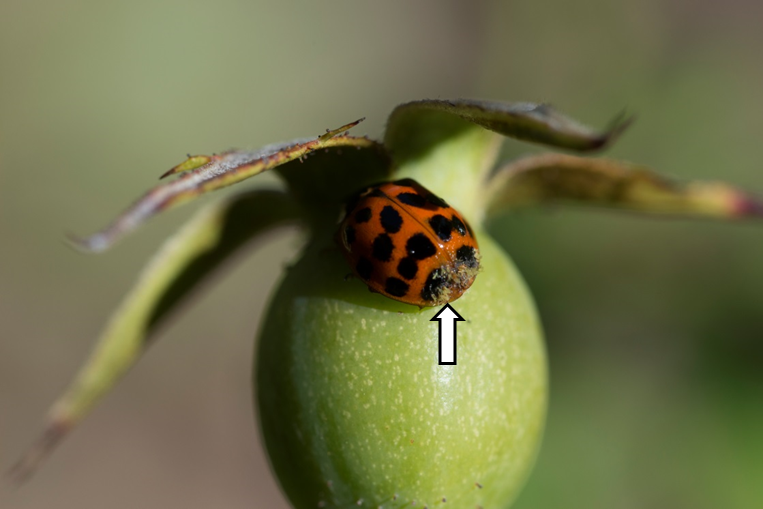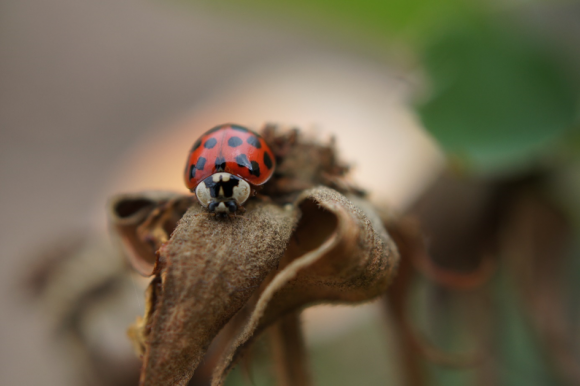10 March 2016 | By Ingrid Minnaar
The first detection of the parasitic fungus Hesperomyces virescens on ladybirds (coccinellid beetles) in South Africa was made by a team of researchers from Harvard University and Stellenbosch University.
The study by Danny Haelewaters (Department of Organismic and Evolutionary Biology, Harvard University), C·I·B core team member Susana Clusella-Trullas and C·I·B PhD student Ingrid Minnaar, looked at the occurrence of Hesperomyces virescens on invasive and native ladybirds around Stellenbosch, Western Cape Province, South Africa.
Hesperomyces virescens is a fungus that infects adult ladybirds and can be identified by yellow fruiting bodies that the fungus produces from spores (see picture below). These spores are spread from one ladybird to another through direct contact. It is mostly found on specific places such as the back of ladybirds suggesting that it spreads during mating or when ladybirds intermingle while forming groups to keep warm in winter.

Ladybirds collected in Stellenbosch between 2013 and 2015 were screened for these fungal fruiting bodies, and DNA sequencing techniques were used to identify the fungus. The researchers reported the first records of the fungus on the invasive harlequin ladybird, Harmonia axyridis, and on the native ladybird, Cheilomenes propinqua. The findings suggest that the main host for this fungus in South Africa is the invasive ladybird Harmonia axyridis. Native to Asia, this beetle has spread to all continents, except Antarctica. Its aggressive nature and competition with other ladybirds has led to the decline of native ladybird species in many regions of the world.
“It is not yet known whether the fungus negatively affects its hosts or whether its spread is facilitated by the invasive ladybird Harmonia axyridis. If the fungus has harmful effects on native ladybirds, these new infestations could add to the decline of native ladybirds in South Africa. On the other hand, if the fungus mainly impacts Harmonia axyridis, it could potentially be used to control this invasive ladybird” says Ingrid Minnaar, co-author of the paper published in the journal Parasite.
Read the paper
For more information, contact Ingrid Minnaar at iaminaar@sun.ac.za or Susana Clusella-Trullas at sct333@sun.ac.za

